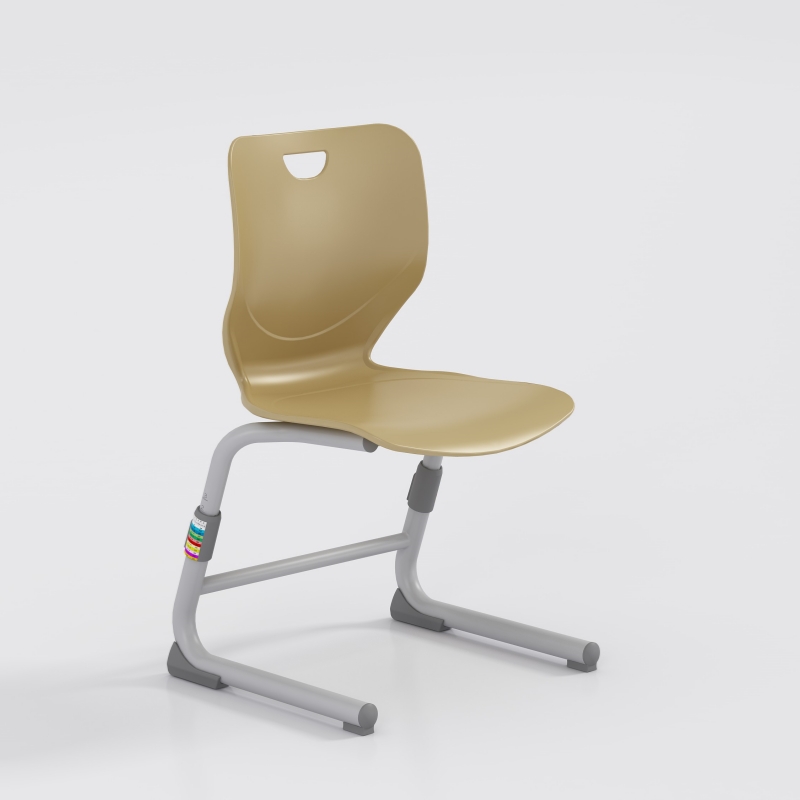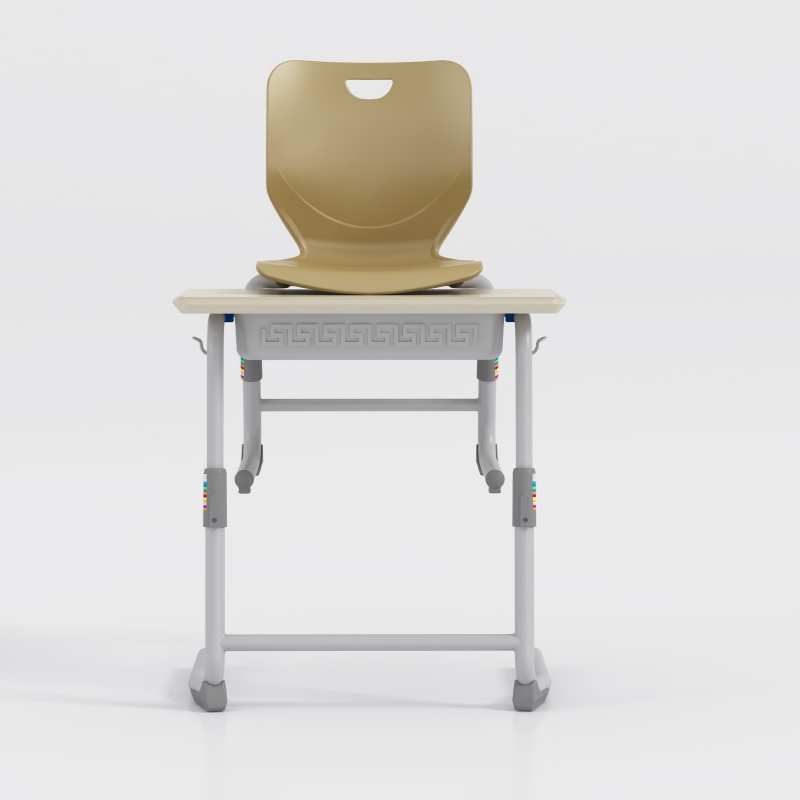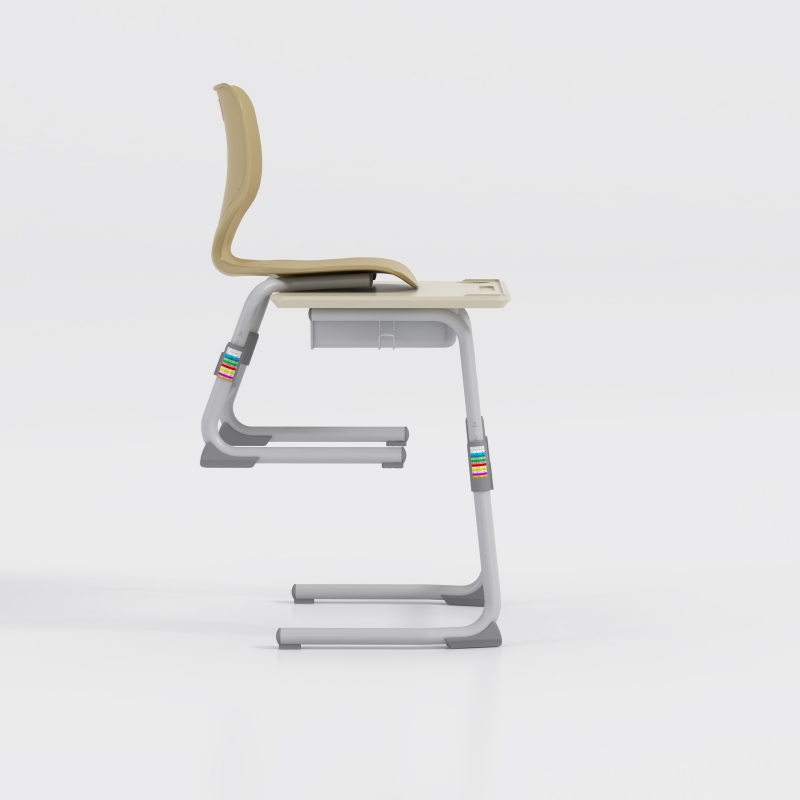Ergonomic furniture is becoming increasingly popular in today's modern classroom Spaces as people become more aware of its benefits in promoting better posture, reducing muscle strains and increasing productivity. Armless classroom chairs are a special piece of furniture that has caused debate among experts. While some argue that armrests provide necessary support and comfort, others argue that armless chairs can also be considered ergonomic.

Ergonomics is the science of designing and arranging objects in a way that optimizes human efficiency and comfort. For classroom chairs, the primary goal of ergonomics is to create a comfortable and supportive seating experience that minimizes the risk of musculoskeletal disorders.
Proponents of armless classroom chairs argue that they offer users more flexibility. Without handrails, people can adopt a variety of poses and postures while working, promoting movement and reducing stress on specific muscle groups. This enhanced mobility is especially beneficial for tasks that require frequent movement or crossing a table, such as painting or handwork.
Critics of armless tables and chairs stress the importance of adequate support to maintain good posture and prevent discomfort. These experts say armrests play a vital role in providing support to the arms and shoulders and relieving stress and tension in these areas. Armrests also encourage more upright sitting, aligning the spine and reducing stress on the lower back. Persistently slouching or leaning against a desk without proper arm support can lead to long-term musculoskeletal problems.

To gain insights from industry professionals, we spoke to several renowned ergonomics experts and designers. Linda Thompson, a leading ergonomics consultant, stresses the importance of customising tables and chairs. She advises that the suitability of a handrail depends on personal preference and job requirements. Thompson emphasized that the height, width and Angle of the armrests should be adjustable to accommodate different body types and positions.
Another expert, Mark Collins, a chiropractor who specializes in ergonomic health, advocates a middle-ground solution. He recommends considering classroom chairs with adjustable arms. This gives the user the option to use the handrail when needed, such as at rest, while also having the flexibility to remove the handrail for activities that require more freedom of movement.
We reached out to classroom staff who have used armless classroom chairs and gathered their feedback. Responses varied, with some emphasizing the benefits of increased mobility, while others pointed to the lack of arm support during long working hours. This suggests that individual preferences and the tasks performed play an important role in determining whether an armless chair is appropriate for a particular user.
All in all, there is no simple answer to the question of whether armless classroom chairs are ergonomic. Expert opinions vary, as does personal experience. What stands out, however, is the importance of customization and adjustability in finding the right classroom chair. Whether it is an armless chair or a chair with adjustable arms, it is crucial to choose a chair that suits the user's body type, the requirements of the job and promotes good posture. As with any piece of ergonomic furniture, making informed decisions based on individual needs is essential to ensure a comfortable and productive work environment.

After examining the various opinions surrounding the subject of whether armless classroom chairs are ergonomic, it is clear that there is no one-size-fits-all answer. What may be ergonomic for one person may not be appropriate for another. However, it is important to consider individual needs and preferences when choosing the right classroom chair. Handrails can provide support and promote proper posture, but they can also limit movement and cause discomfort for some users. Ultimately, the key to achieving ergonomic learning Spaces is customization and adaptability. Whether or not armless classroom chairs are chosen, it is critical to prioritize adjustable features such as seat height, waist support, and reclining mechanisms. By taking into account individual body types, study habits and personal preferences, students can create a comfortable and productive environment that meets their ergonomic needs. Remember that ergonomics is not a one-time solution, but an ongoing process of evaluation and adjustment. So consider the pros and cons of armless classroom chairs, but above all, prioritize personalized ergonomic solutions for a healthy and efficient learning experience.

